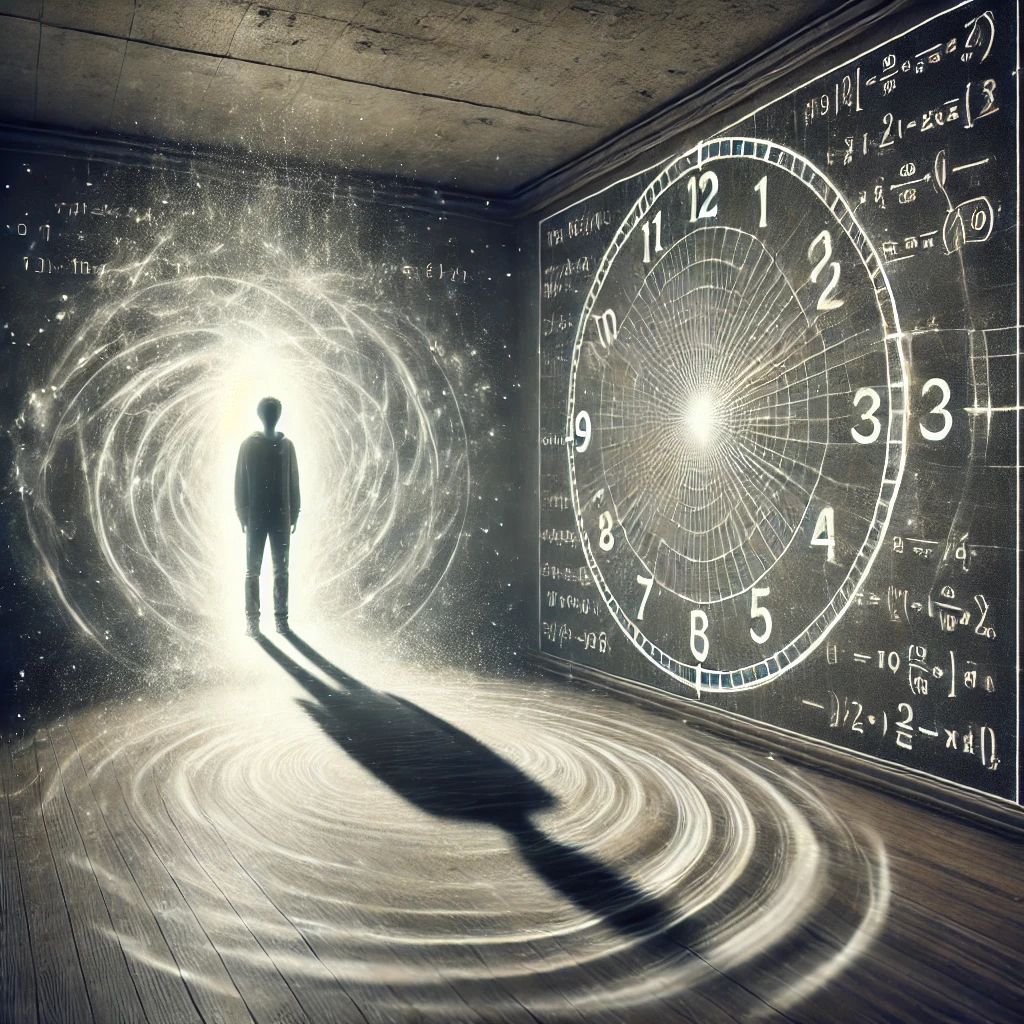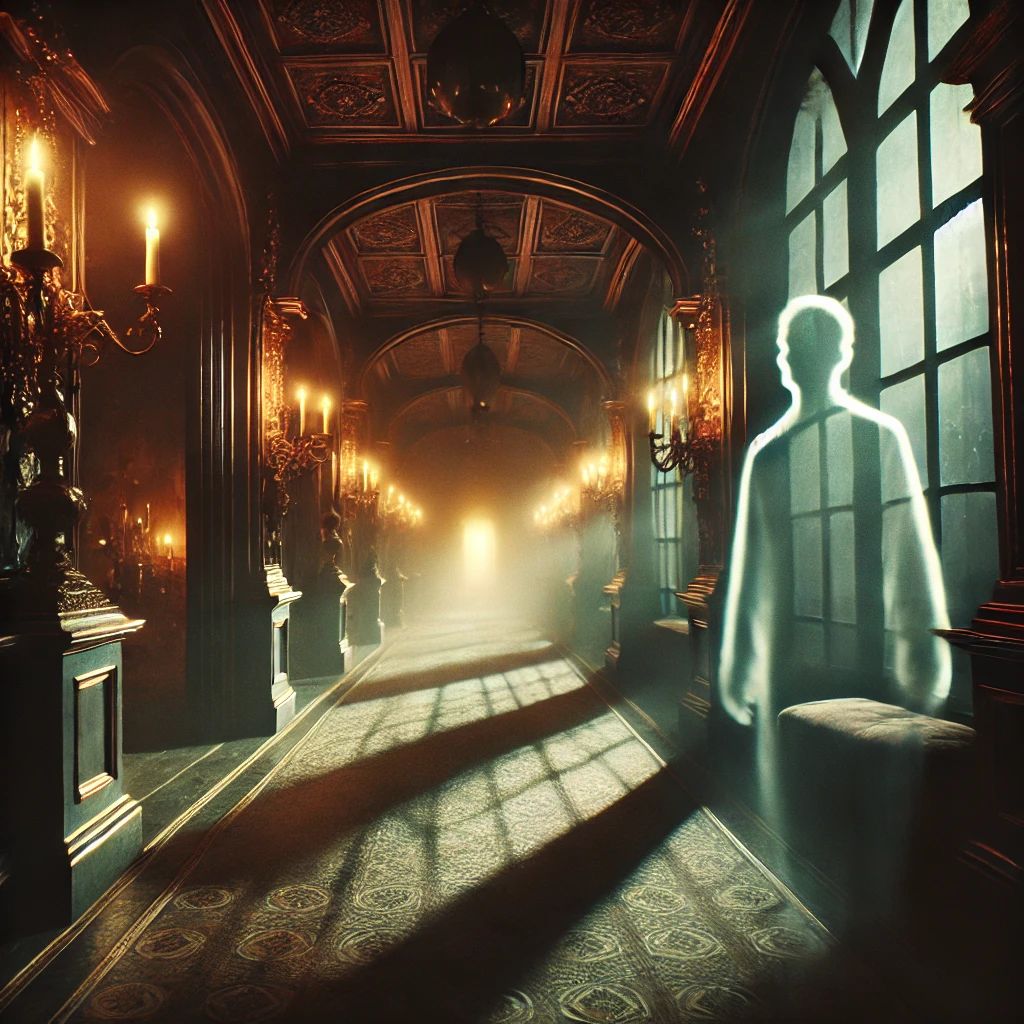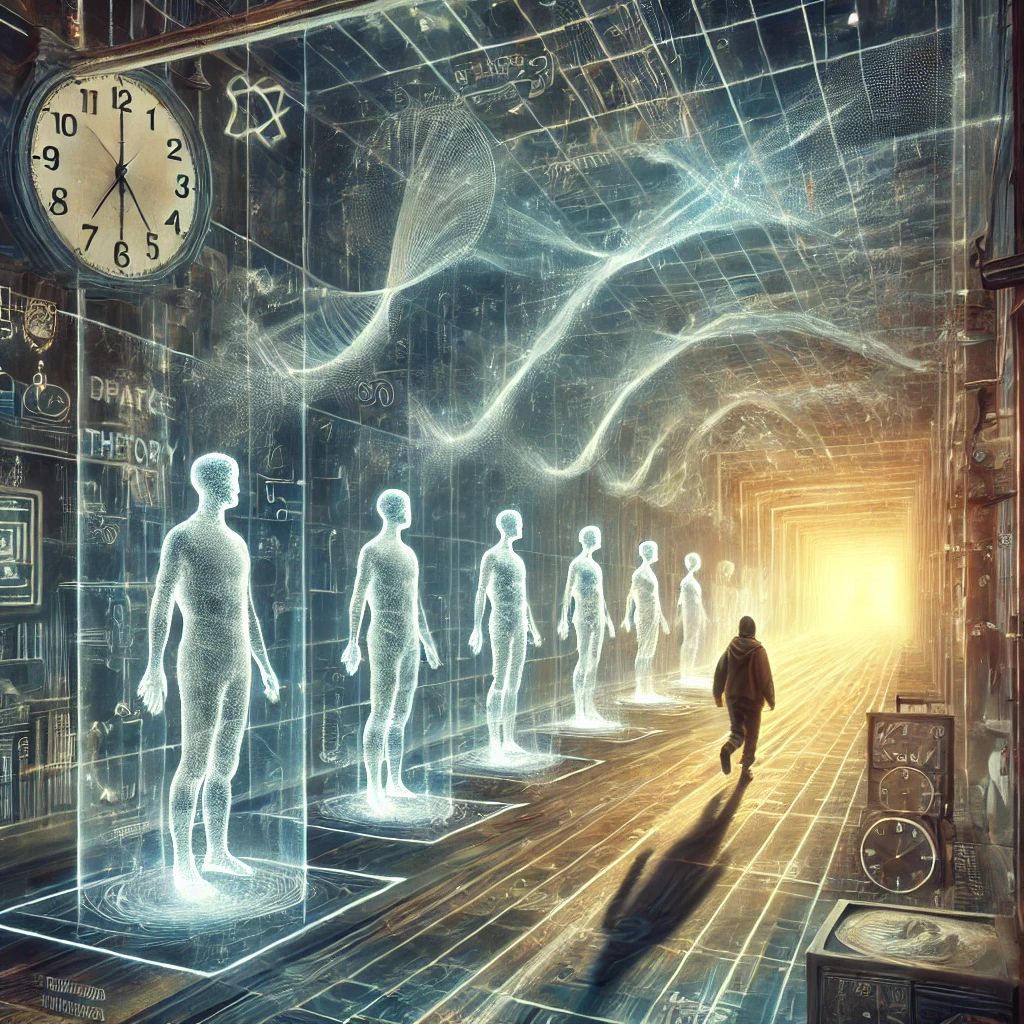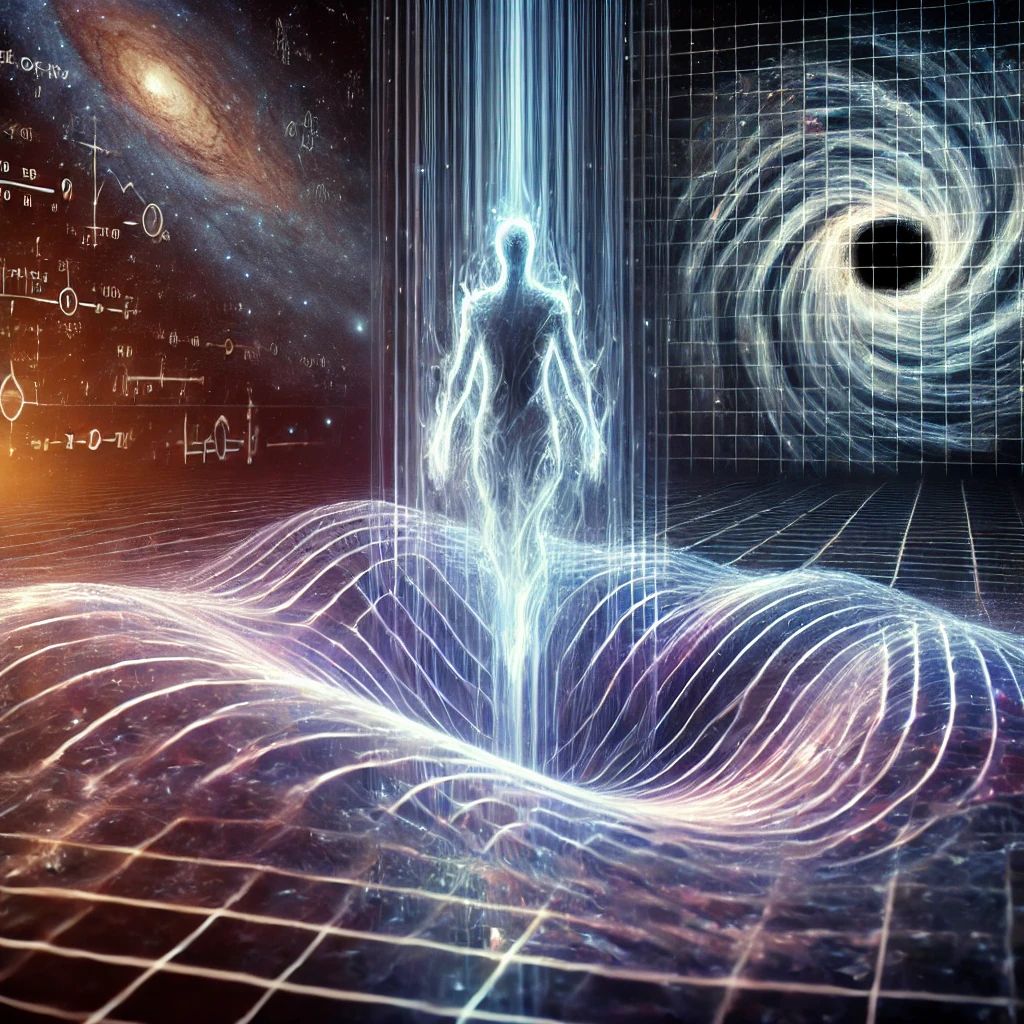
Ghost sightings have held human attention for generations. Tales of transparent figures gliding through corridors or eerie footsteps echoing in deserted rooms are common in many cultures. Many people presume these events involve spirits of the dead, yet some researchers propose that they might instead point to phenomena rooted in physics and psychology. The Time Shadow Theory suggests that these haunting experiences could stem from brief observations of other points in time. This paper explores that hypothesis, focusing on known principles in relativity and quantum mechanics, as well as the psychological foundations that shape our perception of these events. Borley Rectory in Essex, England, provides a central case study for illustrating these ideas.
Cultural Foundations of Hauntings

Ghost stories are deeply woven into the folklore of societies around the world. Legends about lost souls wandering through empty halls or floating above old staircases often get passed down for generations. Over time, a few reports of unexplained incidents may cause a building to gain a powerful reputation for being haunted. Visitors then arrive expecting ghostly activity, which can alter the way they interpret normal sounds or subtle visual cues.
This tendency to confirm what we expect ties closely to our psychological makeup. Neuroscience studies indicate that the human brain actively seeks patterns, sometimes perceiving meaningful images or sounds where none exist. This phenomenon, often called pareidolia, helps explain why people might see faint shapes or hear vague whispers in an old house, especially if they are primed to detect something eerie. Group dynamics can reinforce these perceptions, as one person’s startled reaction may make others more likely to believe that something paranormal has occurred.
Research in psychology also indicates that strong emotions and environmental context can heighten sensory awareness. When individuals feel anxious or excited, their brains allocate extra attention to seemingly minor details, magnifying small sounds or visual flickers. In a house rumored to be haunted, these factors can easily merge. A gust of wind rattling a window might be experienced as a menacing presence, and the collective response of a group can further solidify the impression that a ghostly encounter has taken place.
Core Concepts of the Time Shadow Theory

The Time Shadow Theory argues that certain reported encounters could be linked to moments in which observers momentarily perceive another segment of time. Albert Einstein demonstrated that space and time form a single continuum, sometimes described as four dimensional spacetime. Hermann Minkowski expanded this idea by showing that time functions as an additional dimension alongside the three spatial dimensions. In some interpretations, past, present, and future may coexist in what is called a block universe. Although mainstream physics does not claim we can freely step outside our own era, it accepts that time is not as rigid or isolated as everyday experiences suggest.
Relativity outlines how massive objects or intense gravitational fields can warp spacetime, affecting the passage of time itself. Although Earth’s gravitational environment is usually too mild to create dramatic distortions, tiny deviations or unknown factors could, at least theoretically, open the possibility for unusual temporal phenomena. In extreme scenarios such as those near black holes, predictions indicate that time can slow down or bend significantly compared to other reference points. While none of this proves that people can see another century in their living room, it shows that time is more dynamic than our daily routines imply.
Quantum mechanics further enriches this discussion by showing that particles can act like both waves and discrete points, and that entangled particles may affect each other instantly over vast distances. The observer effect indicates that measuring or observing a quantum system can fundamentally alter its behavior. Some researchers speculate that rare or highly specialized conditions could allow quantum effects to appear at a macroscopic level, possibly including phenomena that challenge our usual sense of cause and effect. Retrocausality remains a theoretical concept suggesting that future events might influence past states. Although unverified in practical terms, it poses interesting possibilities for understanding how time might flow in less linear ways than we assume.
If we combine these relativistic and quantum ideas, a framework emerges for hypothesizing that so called hauntings could involve fleeting portals or windows. Under these windows, observers might perceive aspects of past or future events that become momentarily visible or audible. Instead of involving the spirits of the departed, the phenomenon might be a rare intersection of physics, environment, and human perception.

Borley Rectory as a Case Study
Borley Rectory, built in 1862, earned a reputation as one of Englands most haunted structures. Reports of ghostly nuns and unexplained footsteps captured widespread attention, particularly through the investigations of Harry Price in the early 1900s. Though the rectory was demolished in 1944, interest in its alleged hauntings has endured. Individuals still visit the site, hoping to witness an apparition or sense an otherworldly presence.
According to the Time Shadow Theory, these sightings and disturbances might stem from short lived overlaps in spacetime rather than the activities of restless spirits. If a visitor notices a faint figure resembling a nun, that experience could be an instance of perceiving someone from a different point on the timeline of the rectory. The mental readiness of the observer, primed by ghost stories and a heightened state of alert, could blend with subtle sensory cues to create a memorable impression of a classic haunting. The site’s long standing reputation strengthens this effect, prompting visitors to interpret mundane events as signs of supernatural contact.
Counterarguments and Scientific Challenges
Skeptics highlight the lack of conclusive evidence for temporal overlaps in ordinary situations. Typical haunted houses are old and prone to creaking floors, temperature shifts, and echoes. All these can be easily transformed into perceived paranormal encounters if observers anticipate something unsettling. Tools like electromagnetic field meters or infrared cameras can register variations that are often traceable to normal sources like faulty wiring or reflections. Data collection also depends on chance because hauntings are not reproducible on demand, making it difficult to apply standard scientific controls.
Even so, researchers in physics, psychology, and other disciplines continue to investigate how time, perception, and cognition interrelate. While the Time Shadow Theory is hypothetical, it aligns with ongoing debates about whether our standard view of time overlooks deeper complexities. Experiments testing whether quantum mechanical or relativistic principles might generate apparent anomalies in human perception are in their early stages. Large scale confirmation of time overlap events has not been achieved, so the theory must remain a scientific speculation until such data arise.
Conclusion
The Time Shadow Theory frames certain haunting claims as moments when individuals might catch brief impressions of different points in time. This explanation is built on established principles of spacetime from relativity, as well as the unusual and sometimes counterintuitive findings of quantum mechanics. Psychological research shows how expectation, emotional states, and group dynamics reinforce the impression of witnessing a ghost. Borley Rectory serves as an illustrative case in which a long history of reported apparitions could be interpreted in this time oriented context. Although skeptics question the evidence for these events, the Time Shadow Theory remains a fascinating lens through which to examine hauntings, highlighting the possibility that time itself may be more fluid and unpredictable than our daily experiences suggest.
References
Einstein A 1916 Relativity The Special and the General Theory
Minkowski H 1909 Space and Time Address presented at the 80th Assembly of German Natural Scientists and Physicians
Greene B 1999 The Elegant Universe Superstrings Hidden Dimensions and the Quest for the Ultimate Theory W W Norton and Company
Price H 1939 The Most Haunted House in England Ten Years Investigation of Borley Rectory Longmans Green and Co
Radin D 1997 The Conscious Universe The Scientific Truth of Psychic Phenomena HarperOne
Persinger MA 1983 Temporal Lobe Stimulation and the Experience of Ghosts in Perceptual and Motor Skills 57 1255 to 1262
Wiseman R and Watt C 2005 Parapsychology Ashgate